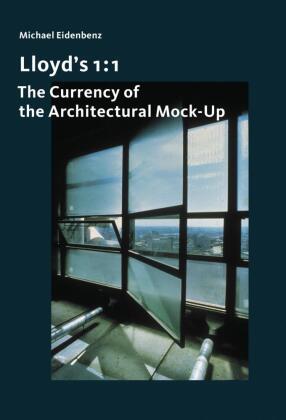
Lloyd's 1 : 1 - The Currency of the Architectural Mock-Up
| Verlag | gta Verlag |
| Auflage | 2021 |
| Seiten | 220 |
| Format | 16,9 x 1,8 x 25,1 cm |
| Großformatiges Paperback. Klappenbroschur | |
| Gewicht | 595 g |
| Artikeltyp | Englisches Buch |
| Reihe | Architektonisches Wissen |
| ISBN-10 | 3856764127 |
| EAN | 9783856764128 |
| Bestell-Nr | 85676412A |
Das Lloyd's-Gebäude in London wurde in den frühen 1980er Jahren nach einem visionären Entwurf von Richard Rogers and Partners errichtet. Das Projekt überführte massgebliche Ideen der Zeit wie die der Megastruktur oder der intelligenten Umgebung in gebaute Realität. Eine entscheidende Rolle dabei spielten Mock-ups, prototypische Modelle in Originalgrösse, die es dem Team um Rogers erlaubten, die notwendigen neuartigen Konstruktionen und Verfahren zu testen und so die Risiken des ehrgeizigen Projektes zu minimieren. Lloyd's 1 : 1 ist die erste Fallstudie zu einem der wichtigsten Bauprojekte der Spätmoderne. Anhand von bisher unveröffentlichtem Material aus den Archiven von Rogers Stirk Harbour + Partners, Josef Gartner und Arup werden Planungsprozesse rekonstruiert und Arbeitsmethoden veranschaulicht. Zahlreiche Beispiele, wie Mock-ups als Forschungs- oder Planungsinstrumente eingesetzt worden sind, verdeutlichen ihre Relevanz für die Weiterentwicklung der Baukultur.
The Lloyd's building in London was constructed in the early 1980s based on a visionary design by Richard Rogers and Partners. Its planning and construction transformed the ideas of megastructure and intelligent environment into built reality. Mock-ups (prototypic full-size models) played a crucial role in this, enabling Rogers' team to test and refine the necessary novel constructions and procedures to minimize the risks of such an ambitious project. Lloyd's 1 : 1 is the first case study of one of the most important building projects of the late modern era. It showcases previously unpublished material from the archives of Rogers Stirk Harbour + Partners, Josef Gartner and Arup to reconstruct the planning process and demonstrate the working methods. Examples of how mock-ups were used as research or planning instruments highlight their relevance for further developing building culture.
